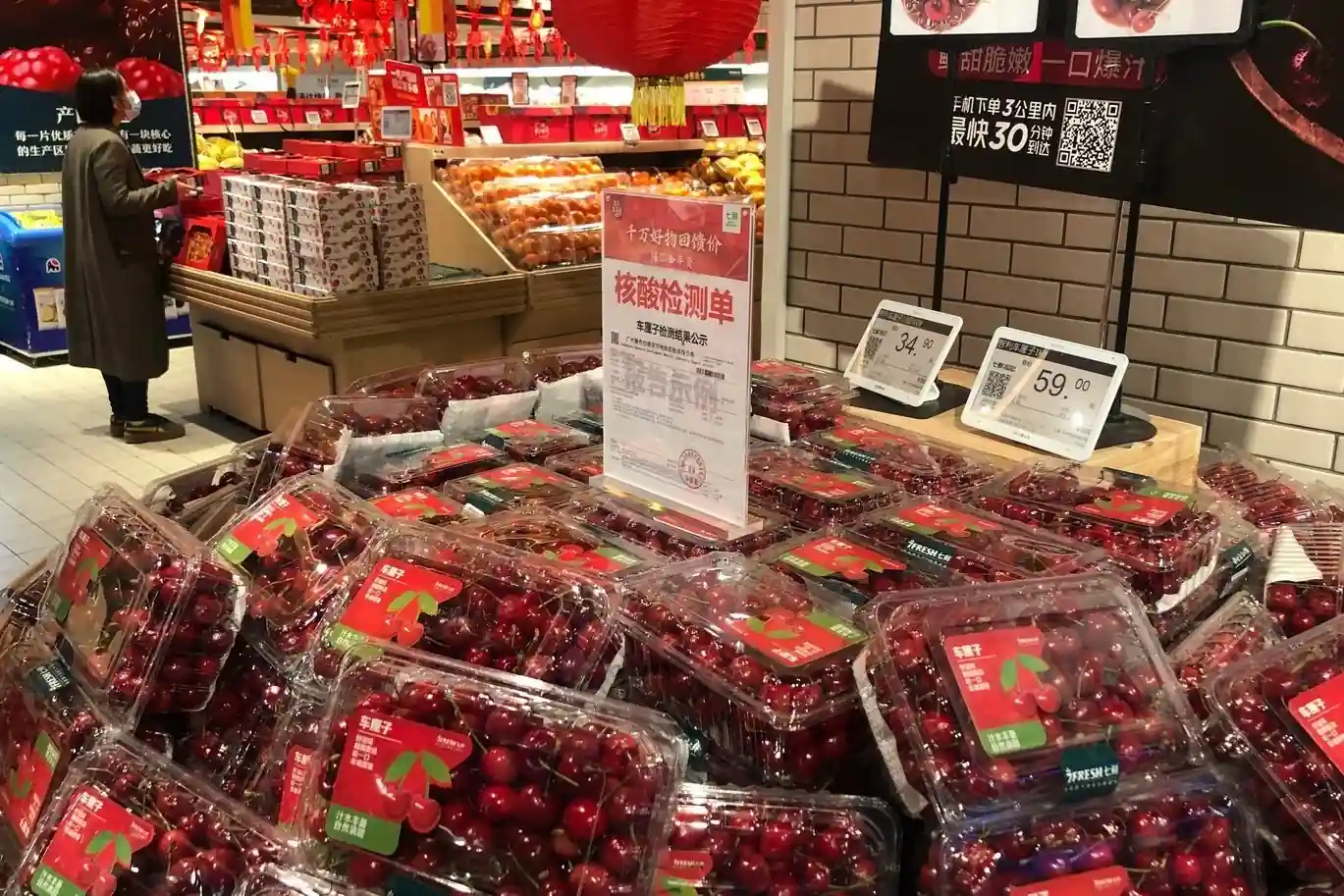According to the report China: Stone Fruit Annual, published by the Foreign Agricultural Service of the United States Department of Agriculture, cherry production in China is expected to increase by 6% in the 2024/25 season, reaching 850,000 tons. The rise is attributed to the expansion of cultivated area and higher fruit yields.
However, the more abundant supply and weak market demand have led to a further decline in overall cherry prices, although prices for high-quality cherries have remained stable. While China’s current economic recession has impacted cherry consumption, imports are expected to rise to 420,000 tons this season, largely due to increased marketing efforts by exporting countries.
Expansion of Plantings Slows While Greenhouse Production Increases
Some northern regions of China, including the main cherry-producing province of Shandong, experienced prolonged drought this spring. However, by early June, when drought conditions were most severe, the cherry season had already ended in most areas.
Growers in Yantai reported that adverse climatic conditions only affected late-maturing varieties, resulting in a reduction in cherry size. In other major production areas, growing conditions remained normal, and improvements in cherry production and quality are expected.
Although the growth rate has slowed, the cultivated area of cherries in China is expected to increase from 193,000 hectares in the 2023/24 season to 199,000 hectares in the 2024/25 season. Cherry planting has also stabilized in Liaoning and Shandong, after authorities introduced new policies to regulate agricultural land use.
Cherry Growers Turn to New Varieties, but Quality Remains Inconsistent
According to industry sources, cherry growers in traditional production areas like Liaoning and Shandong are replacing older varieties, such as the Red Lantern, with more popular ones like Russian No. 8. Other popular varieties include Meizao, Qizao, Jiahong, Rainier, Black Pearl, and Brooks. Chinese growers generally prefer early or mid-season varieties, while late-maturing varieties such as Lapins, Regina, and Kordia make up a relatively small market share.
The quality of cherries in China has generally improved in recent years, and some Chinese cherries, especially those grown in greenhouses, are now able to match imported cherries in taste, color, size, and freshness. However, as most cherries are still grown by small farmers, quality remains inconsistent.
Chinese Consumers Focus on Cost-Effectiveness
Cherry consumption in China is expected to increase due to improved supplies. Additionally, greater marketing efforts for imported cherries outside first-tier cities are boosting the off-season cherry consumption from southern hemisphere countries.
However, the economic crisis has impacted cherry consumption in China, especially in the gift market. Consumers tend to seek medium-sized cherries that offer a better price-quality ratio, and larger two-kilogram packages are particularly appreciated.
Despite these trends, high-quality cherries, including imported varieties, continue to attract wealthier consumers due to their larger size, firm texture, intense color, and high Brix values.
Offline sales remain the main purchasing channel for Chinese cherry consumers, accounting for about 70% of total sales, although e-commerce sales are growing rapidly. Online influencers conducting live streams directly from cherry orchards have proven particularly effective in bringing Chinese consumers closer to the source.
Cherry Imports to China Expected to Reach 420,000 Metric Tons
Cherry imports into China are expected to continue growing in the near future, particularly due to increased supplies from Chile, where cherry production is expected to double in the coming years. Meanwhile, import volumes are projected to rise from 388,000 metric tons in the 2023/24 season to 420,000 metric tons in the 2024/25 season.
Both the Chilean government and the cherry sector are intensifying marketing efforts in an attempt to reach more second- and third-tier Chinese cities. Chilean cherry exports are further facilitated by the use of chartered ships to designated Chinese ports.
Read the full article: Produce Report
Image: SL Fruit Service
Cherry Times - All rights reserved












